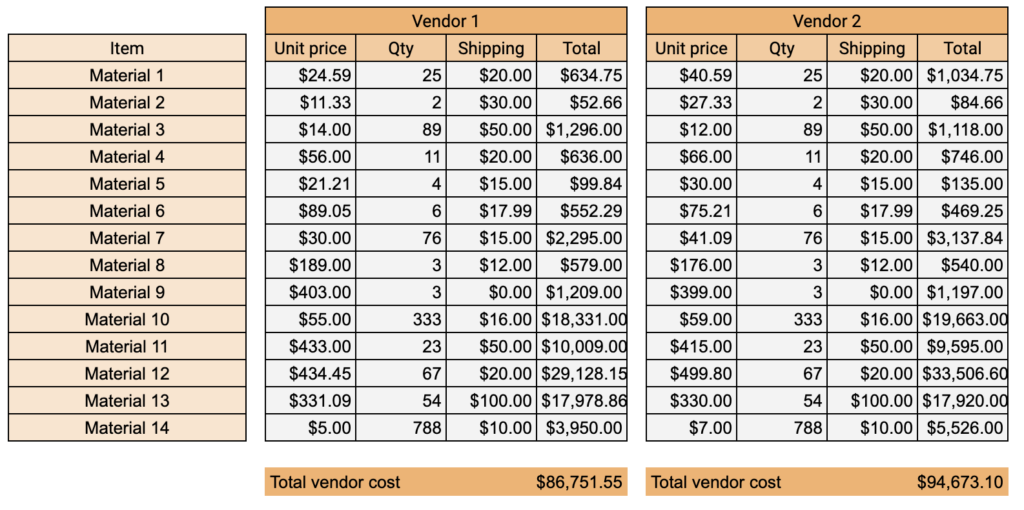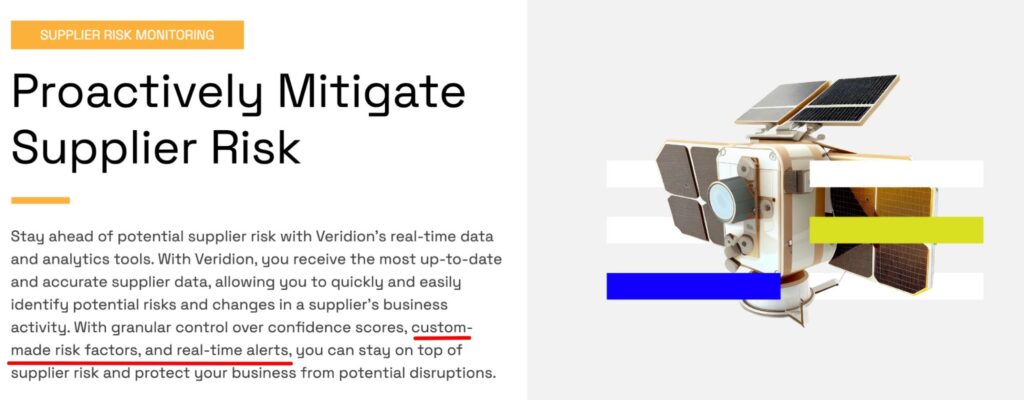5 Benefits of Procurement Market Intelligence


Supply chain disruptions, rising commodity prices, and rapid technological changes are the main reasons behind many companies’ heightened focus on procurement market intelligence.
By leveraging various market data collection and analysis tools and methods to gain data-driven insights, procurement departments can make better-informed decisions.
More precisely, procurement market intelligence can guide your procurement team toward cost savings, improved operational efficiency, and enhanced risk mitigation.
Join us as we explore these benefits and more.
Saving money is one of the top priorities of procurement teams and one of the key benefits of effective procurement market intelligence.
The insights extracted from procurement market intelligence serve as the compass guiding your procurement team toward optimal outcomes, including cost efficiency.
With this in mind, let’s look at the key components of procurement market intelligence.
Each element depicted below intertwines with others to secure a holistic view of procurement processes, offering insights and enabling the procurement department to realize the benefits we’re exploring.

Source: Veridion
These components intrinsically overlap, creating a synergistic approach to procurement excellence. But let’s look at each separately and consider how they contribute to formulating cost reduction strategies.
Supplier intelligence helps procurement professionals understand suppliers’ capabilities and overall characteristics, as well as evaluate and monitor their performance in terms of quality, delivery, and other parameters.
Price intelligence, i.e. comparing costs and pricing strategies among different vendors, is one of those parameters.

Source: Veridion
And it is crucial for making cost-effective procurement decisions.
Moreover, regular market analysis, benchmarking against competitors, and industry standards contribute to understanding pricing trends.
This intelligence allows procurement departments to monitor prices, track variances, and negotiate favorable terms.
For example, Chief Procurement Officers (CPOs) and their team members can use price intelligence to cost-compare vendors.

Source: Veridion
For enhanced comparison, they can add relevant insights from other intelligence sources.
One of those sources is market and competitive intelligence, which focuses on the nature and competitive landscape of supply markets.
Understanding trends and competitors in your suppliers’ respective markets helps:
This intelligence further expands supplier and material/product/service benchmarks beyond pricing, enabling more strategic sourcing, as discussed later.
Lastly, compliance intelligence ensures suppliers, their materials/products/services, and procurement practices align with relevant laws, regulations, and industry standards.
It includes considerations such as contractual, regulatory, and sustainability (ESG) compliance and focuses on reducing risks by monitoring regulatory changes, supplier certifications, and their adherence to legal and industry standards.
This helps generate savings by preventing supply chain disruptions and avoiding potential financial and reputational damage associated with non-conforming raw materials/components.
As said, when all these elements of procurement market intelligence are combined and the right analytics tools and methods are used, it creates a comprehensive view and understanding of all procurement processes and various factors that affect them.
Ultimately, this enables your procurement team to gain data-driven insights, make cost-efficient decisions, and save money.
The largest internal efficiency gains are made when your department’s manual procurement processes, including intelligence-gathering and analysis, are automated and streamlined through the adoption of procurement automation tools.
This reduces manual workload, and automates routine tasks, all while providing real-time insights into market trends and supplier performance, generating efficiencies across the procurement spectrum.
And companies across the globe are aware of this.
This is reflected in a Deloitte study of CPOs’ priorities for 2023, where the top priority, driving operational efficiency (74%), is closely followed by digital transformation (72%) which enables it.
Below, we added some other top priorities of CPOs that closely align with the benefits of procurement market intelligence we’re exploring.

Illustration: Veridion / Data: Deloitte
These percentages only underline the importance of using procurement automation solutions to streamline internal supplier data collection and analysis.
These capacities should then be combined with more specialized procurement market intelligence tools, such as third-party supplier databases and big data analytics tools.
This enables procurement teams to leverage both internal and external intelligence tools and the resulting insights for efficiency gains.
For example, procurement market intelligence allows for quicker and more data-driven supplier discovery and evaluation, which we will discuss in the next section.
Likewise, if your reports on prospective suppliers are enriched with the latest supplier, market, and compliance intelligence details, this can significantly speed up supplier approval by management.
Moving beyond internal processes, these tools offer a strategic advantage in supplier relationship management and supply chain optimization.
Using insights derived from procurement market intelligence, you can collaborate with suppliers to enhance overall performance and streamline supplier relationships.
For instance, by identifying average supplier lead times, you can optimize your organization’s inventory management, streamline order processing, and enhance overall supply chain resilience.
All of this, in the end, results in more efficient operations across several departments.
Identifying, assessing, monitoring, and mitigating supplier risks is a fundamental aspect of effective procurement market intelligence.
Consider a scenario where one of your suppliers is faced with raw material-sourcing issues and/or financial difficulties, up to the point of stopping their deliveries or declaring bankruptcy.
Without ongoing supplier intelligence-gathering, you could be caught unprepared, i.e., without having alternative suppliers lined up, which could cause disruptions in your company’s operations.
However, with a procurement market intelligence solution like our Veridion, you could create custom-made risk factors for each of your suppliers, and let our tool continuously monitor them by scouring billions of web pages every week.
If any risk-relevant changes in the suppliers’ business activities are detected, you’ll receive real-time alerts.

Source: Veridion
As described, Veridion’s supplier risk monitoring feature provides you with accurate and weekly updated supplier information, together with data reliability confidence scores, so you can easily identify potential risks and apply proactive risk mitigation strategies.
For example, if you were alerted about your supplier’s sourcing or financial problems, you could identify and evaluate one or more alternative suppliers as quickly as possible.
But without access to supplier intelligence (i.e., a broad database of potential suppliers that fit a range of your specific procurement criteria), this would be a time-consuming and resource-intensive process.
According to McKinsey, a single supplier search can take about three months and end up considering only a small portion of potential suppliers from sometimes thousands of them.
However, using Veridion’s global supplier database (+80 million companies with +200 million products and services, updated weekly) and search APIs, the initial search can be done in seconds.

Source: Veridion
The search is enabled by using AI-driven natural language input, allowing you to set any number of custom search criteria, including quality (ISO-certified), sustainability (eco-friendly), and location-specific parameters.
This procurement market intelligence allows you to minimize potential risks from the outset by, for example, searching for suppliers that align with your quality parameters, regulatory and industry standards, and ESG objectives.
This functionality is two-fold: it does not only expedite search but also supplier evaluation, i.e., risk assessment.
For instance, your best-priced prospective supplier might be experiencing their own supply or production issues, or their regulatory or political environment might be uncertain or volatile.
Of course, they won’t report it, but Veridion’s customizable risk parameters and up-to-date market intelligence can again help you uncover potential, initially unapparent risks.
To recap, procurement market intelligence tools can help you proactively identify, minimize, and mitigate supplier risk by providing real-time supply chain insights, enabling ongoing risk assessment, and supporting in-depth risk analysis.
Depending on specific needs and procurement market intelligence used, there are many occasions where data-driven insights can create a competitive advantage.
Let’s explore just one example.
Imagine a situation in which the procurement department of an electronics manufacturing company utilizes market intelligence tools.
These tools help them keep a constant eye on real-time data related to production, supplier capacities, and global demand trends for crucial components required by the company.
Consequently, the procurement team becomes aware that a crucial component is facing potential scarcity due to increased global demand and supply chain disruptions.
As we know, this actually happened recently, and the electronics industry is still recovering, as this graph of the steep rise in electronics backorders due to the pandemic shows.

Source: World101
Returning to our example, after gaining timely insights about a potential shortage, the procurement team informs company management of the impending challenges in sourcing a critical component.
This enables the company to explore short- and long-term solutions, from securing the component order to looking for alternative suppliers, diversifying the supply base, or securing strategic partnerships.
As said, there are numerous other opportunities for utilizing procurement market intelligence to gain a competitive edge, such as when a company wants to expand its market or enter a new one and needs to understand wider supply chain dynamics to do so successfully.
Overall, market intelligence empowers the procurement team to identify opportunities and capitalize on evolving market trends, allowing their company to stay ahead of the competition.
The versatility of procurement market intelligence tools and the depth of insights to be gained enables purchasing departments to achieve more strategic sourcing.
This wide-ranging and long-term approach to procurement goes beyond traditional sourcing models that often:
Strategic sourcing adopts a comprehensive perspective, taking into account diverse cost elements, the product life cycle, and supplier-specific parameters, as well as risk factors.
This approach is applied not only during the supplier selection process but also throughout the entire supplier relationship.
For example, we already mentioned how Veridion’s extensive supplier database and advanced search functions can be used to accelerate supplier discovery and sourcing and make the entire process more comprehensive and data-driven.

Source: Veridion
Likewise, we covered how this tool’s market intelligence and risk management features can help both during initial risk assessment and ongoing risk monitoring.
This is another key component of strategic sourcing, which typically aims to build strong, value-driven relationships with suppliers.
In doing so, it considers the broader company goals, including factors like suppliers’ ESG compliance, ethical sourcing practices, long-term reliability, and innovation capabilities.
Overall, effective strategic sourcing is predicated on making informed decisions by factoring in a broad set of critical variables, including quality, delivery, total cost of ownership (TCO), and overall supply chain resilience.
In today’s world, this would be infinitely more difficult and time-consuming (if not impossible) without leveraging procurement market intelligence tools and insights.
We’ll conclude with the obvious: in the current business environment, using procurement market intelligence (data collection and analysis) tools is a necessity.
With the right combination of internal and external market intelligence resources, your procurement team can leverage insights to make more automated, data-driven, and informed strategic decisions.
As a result, procurement market intelligence can be a growth driver that can help save money and generate other benefits we covered, driving supply chain value and resilience.
Moreover, the obtained deeper, real-time understanding of supply market trends and changes can give your team and therefore your company a competitive edge.
All these benefits are crucial in a procurement landscape where agility, adaptability, and informed decision-making are essential for success.